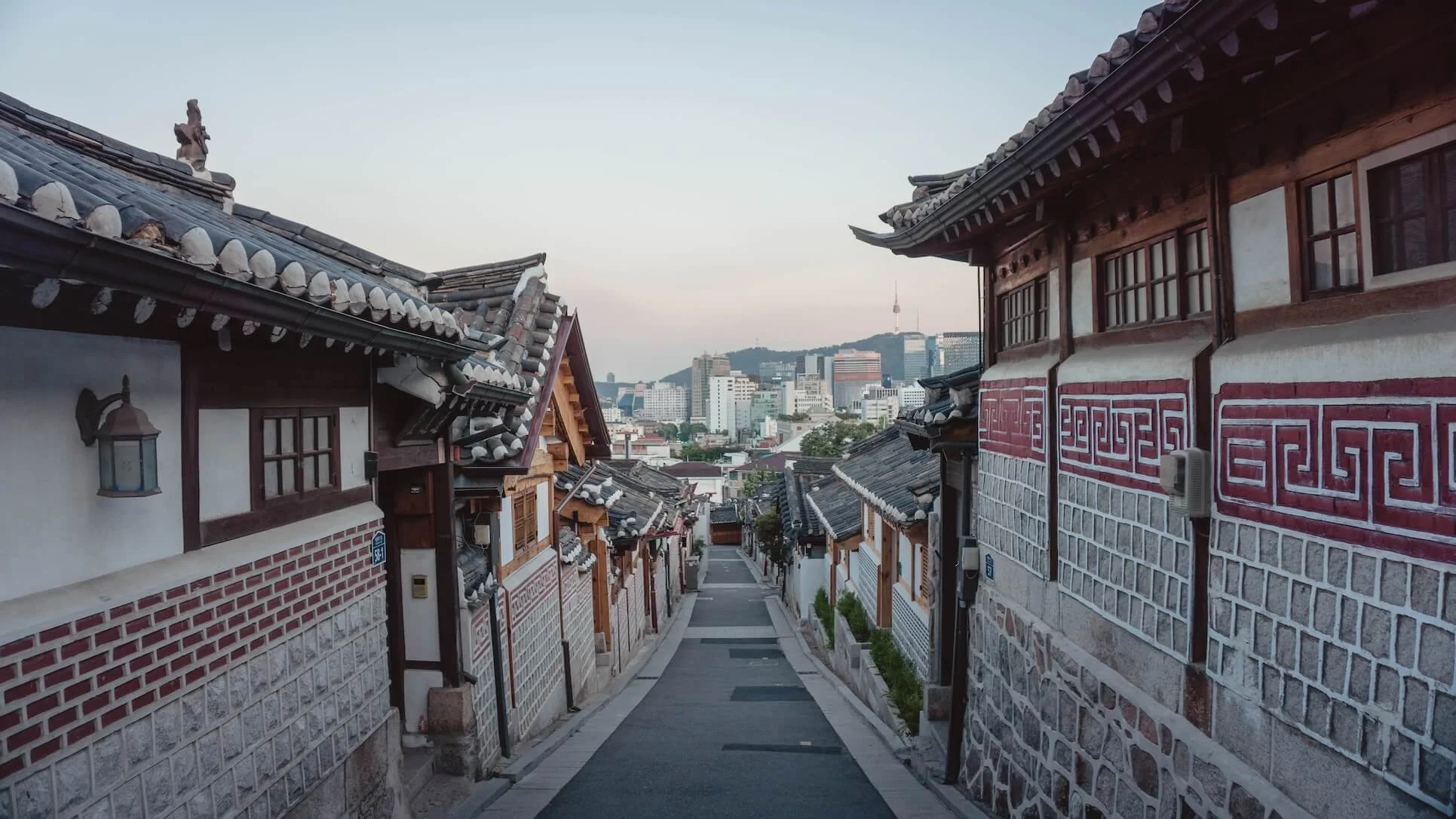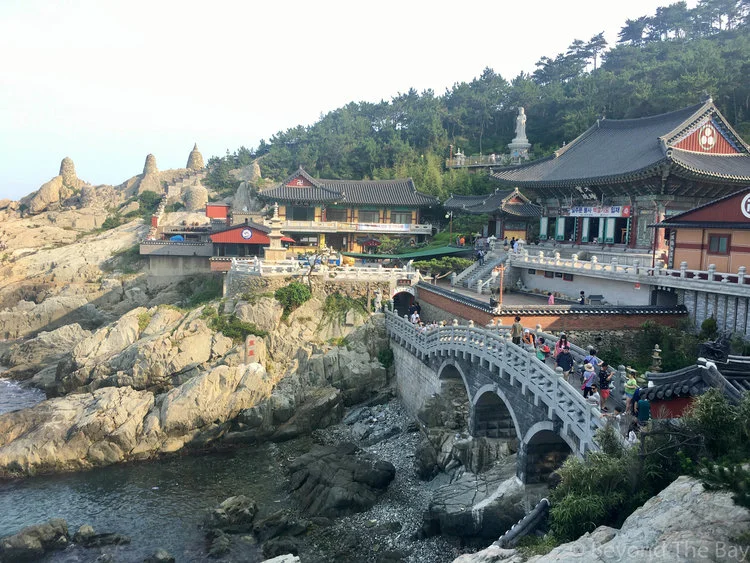Woljeongsa Temple Guide: Everything You Need to Know
/Nestled up in the beautiful mountains of Pyeongchang County, the Woljeongsa Temple is part of South Korea’s Odaesan National Park, and is a must-visit temple for visitors. Read on to find out more about how to get to Woljeongsa Temple, and things to do there.
Woljeongsa Temple is a must visit when in Pyeongchang
Woljeongsa Temple History
Sitting proudly at the entrance of Odaesan National Park, Woljeongsa Temple is one of Ganwgon Province’s most famous temples.
About a 2.5-hour drive northeast of Seoul, the temple is one of South Korea’s most important religious sites. First built in 643 CE by Jajang, a Silla Dynasty Monk, the temple has been destroyed many times. In 1377 and 1833, several buildings burnt down, and more recently, the temple was ravaged in the 1950s as collateral of the Korean War.
Stunning scenery surrounding Woljeongsa
Luckily, the temple was restored in 1964 and has since undergone many reconstructions and transformed into the peaceful temple complex it is today.
Buildings in Woljeongsa temple complex
Woljeongsa is made up of over 20 temples, 22 pagodas and 8 monasteries so you’ll need to spare some time to see Woljeongsa’s magic in detail. What’s another great thing about Woljeongsa? It’s surrounded by hills, mountains and hiking trails – making a visit that much more worth it.
Things to do at Woljeongsa Temple
Because Woljeongsa is such a sprawling temple complex, there are many things you can see here. The temple is full of cultural and religious artefacts, and is in fact home to four National Treasures and five other designated treasures - so be sure to keep a lookout.
Nine Storey Pagoda and Seated Buddha
Here are some things you definitely can’t miss:
Nine Storey Stone Pagoda
Seated Stone Bodhisattva in front of the pagoda
Medicine Buddha in the main hall
Hall of Subline Equanimity
Beautiful Woljeongsa
You can also visit the nearby Woljeongsa fir forest trail, which is a trail that takes you to Woljeongsa Temple through tall forest trees.
Fun fact: If you’ve watched the K-Drama Goblin, this is where Gong Yoo confesses his feelings to Kim Go-eun in the series. Pretty romantic, huh?
Romantic Woljeongsa fir forest trail
Woljeongsa Fir Forest trail
Temple Stay at Woljeongsa
A temple stay can be arranged if you’re interested in staying overnight at Woljeongsa Temple. I’ve heard it’s a one-of-a-kind experience, and that you really learn so much about Korean culture and history that you wouldn’t be able to learn anywhere else.
A temple stay is available at Woljeongsa
There are a few different styles of temple stay at Woljeongsa - experiential, relaxation and daily life. For more information about staying at Woljeongsa, click here.
How to get to Woljeongsa Temple
Public Transport
If you’re taking public transport, get to Jinbu Station by KTX. The station is also sometimes referred to as Odaesan Station. From Seoul, there are about 10 trains running a day, and it takes about 1.5 hours to reach Jinbu.
The train fare varies depending on which class ticket you buy, but the cheapest non-reserved seat costs 18,700 KRW for adults and 9,300 KRW for children.
Woljeongsa Temple, Pyeongchang
From Jinbu Station, take Bus No. 55 and get off at Woljeongsa stop. If you’re unsure, just mention to the bus driver that you’re headed towards Woljeongsa Temple and double check that the bus is headed there too. There are 12 buses a day, with a bus coming once ever 1-2 hours or so. The journey will take about 40 minutes and cost 3000 KRW one way.
To return, just walk back to the bus stop and take the bus stop going back to Jinbu.
Taxi
A convenient option would be to take a taxi to Woljeongsa temple. Prices vary depending on where you’re coming from.
As a point of reference, it’ll probably cost 25,000- 30,000 KRW to reach Woljeongsa from Alpensia Ski Resort. The ride takes about 20 minutes.
Tour
If you plan to visit both Woljeongsa and Sangwonsa Temple, then this autumn tour lets you see both in one day.
Opening Hours and Fees
To enter Odaesan National Park, you’ll have to pay an entrance fee.
Entrance Fees
Adults 3,000 won / Groups 2,500 won
Teenagers 1,500 won / Groups 1,000 won
Children 500 won / Groups 400 won
* Adults (ages 19-64) / Teenagers (ages 13-18) / Children (ages 7-12)
* Groups: 30 people and more
* Preschoolers (ages 6 & under) may enter for free
Woljeongsa Temple is definitely worth the entrance fee
Parking Fees
If you’re coming by car, you’ll also have to pay a parking fee that varies depending on what type of vehicle you’re driving.
Compact vehicles 2,000 won
Mid-sized vehicles 4,000 won / 5,000 won (Peak season)
Large vehicles (bus) 6,000 won / 7,500 won (Peak season)
* Peak season: April, May, July, August, October, November
Front entrance of Woljeongsa
Opening Hours
Woljeongsa Temple is apparently open 24 hours, every day, but we recommend visiting between 8:30am – 5:30pm during daylight hours.
Is Woljeongsa Temple worth visiting?
Winter Wonderland at Woljeongsa
In short – yes, yes, yes. Odaesan National Park is such a beautiful spot in South Korea, and no visit to the park would be complete without visiting Woljeongsa.
Woljeongsa Temple was filled with bright colours
It was a great experience getting lost in the temple complex and just marvelling at all the beautifully decorated buildings. Coupled with the fir forest and views of Pyeongchang mountains, visiting Woljeongsa made for a memorable experience.
What else can I do in Odaesan National Park?
There are a bunch of trails you can embark on if you’re in the mood for a hike.
There’s a lot to do in Odaesan National Park
The Birobong Peak Course takes you from Sangwonsa Temple to the highest peak in Odaesan National Park, standing at 1,563m above ground. The trail is considered quite easy and will take around 3-5 hours round trip.
Other courses in the National Park include the Durobong, Dongdaesan and Sogeumgang Courses.
Read more about courses on offer here.
You can also easily visit the previously mentioned Sangwonsa Temple, which is about a 20-minute car ride from Woljeongsa. If you’re taking a taxi, it’ll cost about 15,000KRW.
Sangwonsa Temple Complex
You can also catch Bus No. 55 again from Woljeongsa Stop, stopping at Sangwonsa Temple stop.
Nearby Sangwonsa Temple is most definitely worth a visit too
To read more about Sangwonsa Temple, check out our post on it here.


















![Reasons to Visit Jeju Island [2024]](https://images.squarespace-cdn.com/content/v1/59d89989bebafb24a356f24c/1666063280458-XZR7DDGU5A9BKUUGPDXO/Orda+1.jpg)
![Day Trip to Seoraksan National Park from Seoul [2024]](https://images.squarespace-cdn.com/content/v1/59d89989bebafb24a356f24c/1544358774727-JR9VJKU5ELRHGQA4GSOL/FullSizeRender+109.jpg)
![Inwangsan Hike Guide: Why You Should Hike Mount Inwangsan Over Bukhansan [2024]](https://images.squarespace-cdn.com/content/v1/59d89989bebafb24a356f24c/1596155329500-L1T7MCBZV5KQIDY1JM1B/View+2.JPG)

![Sangwonsa Temple Guide: Everything You Need to Know [2024]](https://images.squarespace-cdn.com/content/v1/59d89989bebafb24a356f24c/1582944912652-OMBJX7B7TF1CE75DF2BS/Sangwonsa+7.JPG)






Thinking of staying at the Alpensia Ski Resort in Pyeongchang County, South Korea? Read our guide to learn everything you need to know about the resort.